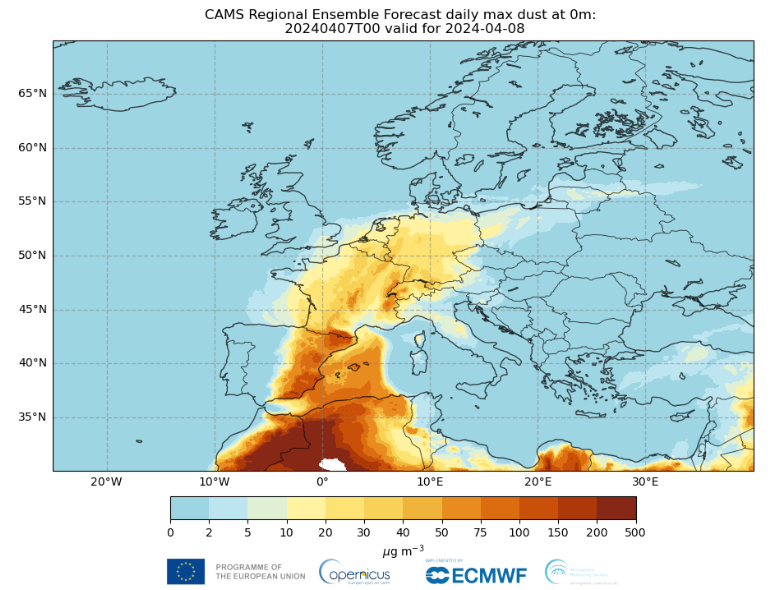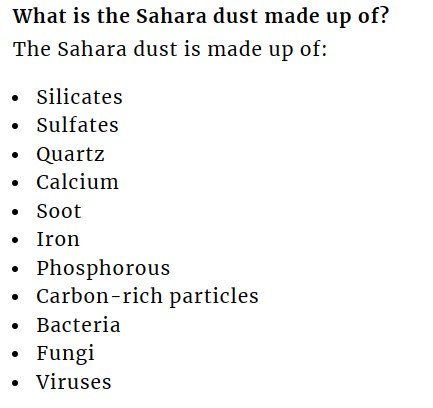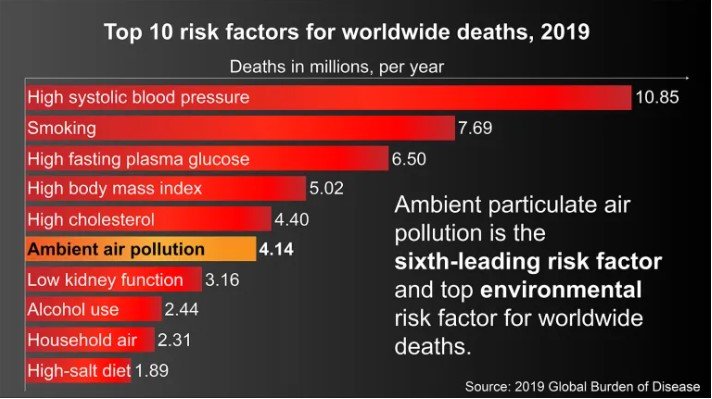Key Highlights:
- The Sahara desert annually releases between 60 to 200 million tons of mineral dust
- The WHO estimated that 1.4% of all deaths worldwide are caused by Particulate Matter
- About 20% of Saharan dust reaches the Amazon region, where satellite observations indicate that around 27.7 million tons settle over the basin
Athens finds itself engulfed in a striking orange haze as billows of dust from the Sahara Desert sweep across the region, marking one of the severest episodes of its kind in Greece since 2018. Similar occurrences had already impacted Greece in late March and early April, extending their reach to parts of Switzerland and southern France.
You Can Also Read: DOES EARTH HAVE A SECOND MOON?
The decline in air quality has been widespread, with even the iconic Acropolis in Athens disappearing from view under the thick veil of dust. This atmospheric phenomenon has stretched as far north as Thessaloniki.
Concerns are heightened, especially for individuals with respiratory ailments, prompting advisories to minimize outdoor activities, don protective masks, and refrain from strenuous exercise until the dust subsides.
The Sahara Desert annually releases between 60 to 200 million tons of mineral dust, with much of it settling close to its source. However, some minuscule particles undertake extraordinary journeys, occasionally reaching as far as Europe. During the December to February period, the Spanish Canary Islands, situated off the coast of northwest Africa, experienced only 12 days without Saharan dust in a span of 90 days.
CAMS Throw in the Towel as Dust Levels Go Nuclear
Over the past few months, the Copernicus Atmosphere Monitoring Service (CAMS) has detected a series of significant Saharan dust transport events across the Atlantic, extending towards continental Europe. In mid-December, 2023 the Canary Islands experienced a notable influx of Saharan dust, resulting in hazy skies and compromised air quality, amidst unusually high temperatures for the season.
CAMS forecasts for aerosol optical depth (AOD) indicated a robust plume (AOD > 1), particularly evident off the Western Maghreb coast.
Projections from CAMS suggested that this extensive Saharan dust transport would progress northward, impacting many regions of western and central Europe, with elevated concentrations of dust particles reaching higher altitudes and extending as far as Britain and Denmark, contributing to haziness.
CAMS forecasts highlighted exceptionally high levels of coarse particulate matter (PM10) over North Africa and the Iberian Peninsula. Regional ensemble analyses by CAMS indicated PM10 concentrations reaching up to 650 µg/m3 over Spain, with certain models within the ensemble projecting values near 2000 µg/m3.
These findings revealed historically unprecedented PM10 concentrations at 107 out of 471 monitoring stations across Spain, with some stations recording average concentrations exceeding 1700 µg/m3, and the El Ejido station in Almeria reaching 1779 µg/m3. Several stations ceased recording data after surpassing 1000 µg/m3. Notably, the World Health Organization considers an average daily exposure of under 45 µg/m3 as safe for health.
For instance, hourly maximum PM10 values in Andalucía ranged from 194 to 3782.16 µg/m3 on March 15, 2022, with the highest recorded value in El Ejido, Almeria. These figures are comparable to PM10 concentrations witnessed during the 2015 fires in Indonesia and the 2021 fires in Siberia.

A Threat to Every Breath
Saharan dust can induce various health issues depending on the size of the particles: larger ones may cause skin and eye irritation while smaller ones can infiltrate the respiratory system upon inhalation, potentially leading to asthma attacks and exacerbating other respiratory ailments. The WHO estimated that 1.4% of all deaths worldwide are caused by PM.
The demographic most susceptible to Saharan dust-related health complications includes children, infants, the elderly, individuals with preexisting lung conditions, and those with chronic cardiopulmonary diseases. Studies have correlated Saharan dust exposure with increased visits to emergency departments due to asthma, chronic obstructive pulmonary disease (COPD), and respiratory infections.

In 2024, the Caribbean Public Health Agency (CARPHA) issued advisories urging individuals to safeguard themselves against the adverse effects of Saharan dust, particularly as a plume covered numerous Caribbean regions.
Recommendations included minimizing outdoor exposure during high dust levels, utilizing dust masks like KN95 when outdoors, employing high-efficiency particulate air (HEPA) filters indoors for air purification, and ensuring the availability and use of prescribed medications for pulmonary ailments.
For milder symptoms, standard allergy remedies such as antihistamines and steroid nasal sprays may offer relief. Prompt medical consultation is advised at the onset of breathing difficulties.

Saharan Dust’s Unlikely Environmental Impact
The northeast-bound Harmattan wind disperses Saharan dust as far as Barbados and Miami from November to March. About 20% of this dust reaches the Amazon region, where satellite observations indicate that around 27.7 million tons settle over the basin. This deposition significantly contributes to soil fertilization, playing a vital role in the ecosystem.
Moreover, Saharan dust deposition in the Atlantic Ocean and the Mediterranean likely serves as a substantial source of iron for marine algae. As these algae descend to the ocean bed or become consumed by planktonic organisms, whose carbonate shells also descend, carbon dioxide becomes sequestered into seafloor sediments.
The distribution of iron across oceanic expanses presents a mechanism for capturing surplus atmospheric CO2. Interestingly, while the prospect of increased dust production due to global warming could be spurred by heightened winds, the subsequent influx of dust into the ocean might serve as a natural buffer, potentially mitigating some of its adverse effects.
While the striking orange haze and hazardous air quality levels from Saharan dust plumes pose significant health risks, particularly for vulnerable populations, this natural phenomenon also showcases nature’s intricate balancing act. As climate patterns continue to shift, the world may bear witness to more frequent dust events – a double-edged sword that both threatens respiratory health and offers an unlikely ally in mitigating atmospheric carbon dioxide levels. In this delicate equilibrium between harm and benefit, humanity must adapt and fortify itself against the dusty winds while unlocking nature’s secrets to harness its restorative powers.


